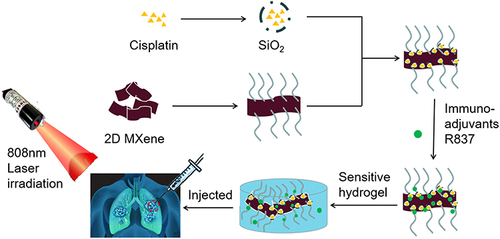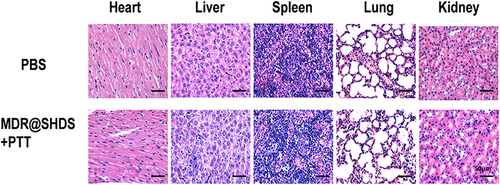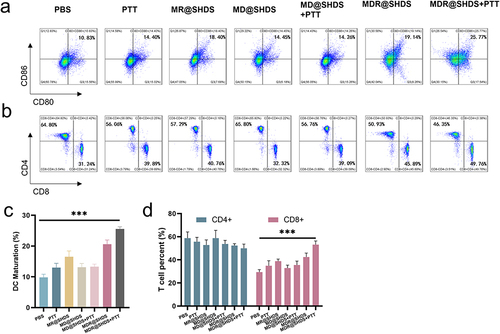Figures & data
Figure 2 Characterization of PEG-MXene@DDP@R837 and MDR@SHDS. (a) TEM of PEG-MXene; (b) TEM of PEG-MXene@DDP@R837; (c) XPS; (d) Controlled release properties of MDR@SHDS; (e) The morphology of MDR@SHDS at different temperatures of 37°C and 55°C.
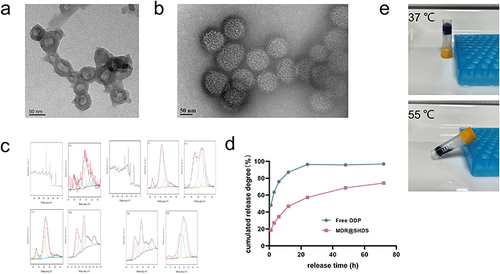
Figure 3 In vitro photothermal performance of MDR@SHDS. (a and b) The heating curves of different upon 808 nm laser irradiation (2.0 W/cm2); (c and d) The heating curves of MDR@SHDS at different concentrations; (e) The heating curves upon 5-cycles 808 nm laser exposure (2.0 W/cm 2).
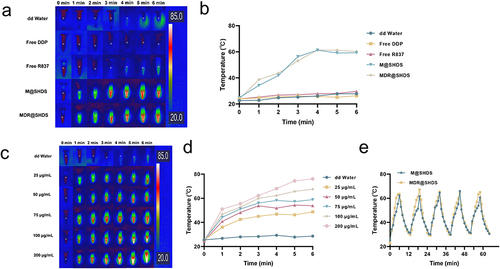
Figure 4 Controlled-release characteristics of M@SHDS. In vivo near-infrared imaging of 0.1 mL, Cy7 solution (0.015 mg/mL), and M@SHDS loaded with equivalent Cy7 in mice subcutaneously at different time points (1 h, 6 h, 24 h, 48 h, 72 h).

Figure 5 In vitro and in vivo biocompatibility assay. (a) Relative cell viabilities of 3T3, Lewis, and RAW264.7 cells exposed to different concentrations of M@SHDS for 24 h; (b and c) The hemolysis assay of various concentrations of M@SHDS and MDR@SHDS.

Figure 6 Photographs, HE staining, and Masson staining of M@SHDS in mice subcutaneously at different time points (30 min, Day 7, 14, 21, 28).
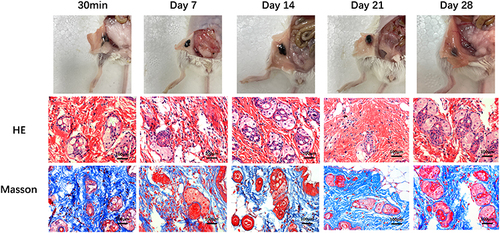
Figure 7 In vitro cancer cellular viabilities, proliferation (a) Cellular viabilities of MDR@SHDS with or without PTT (b and c) EdU fluorescence images after treatment with PTT combined with PBS, M@SHDS, and MDR@SHDS.(The label ** indicates p < 0.01, and the label * indicates p < 0.05).
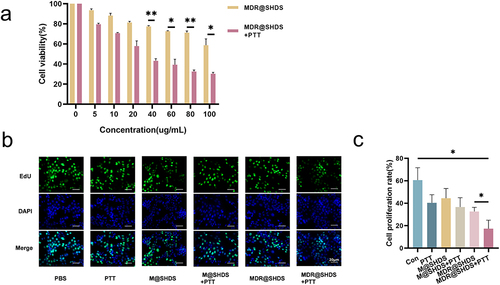
Figure 8 In vitro cancer cellular apoptosis (a and b) TUNEL fluorescence images after treatment with PTT combined with PBS, M@SHDS, and MDR@SHDS. (The label *** indicates p < 0.001).

Figure 9 (a and b) Expression levels of surface molecules (CD80 and CD86) on BMDCs after various treatments; (c) Quantification of expression levels of CD80 and CD86 on the surface of BMDCs. (The label *** indicates p < 0.001).
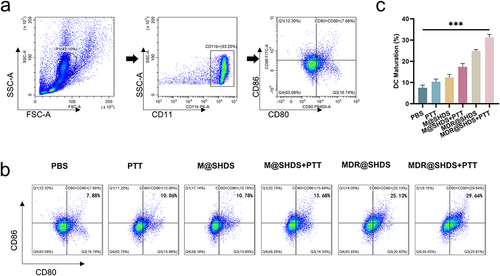
Figure 10 Thermal images of mice bearing tumor after injection of PBS or MDR@SHDS, followed by being exposed to 808 nm irradiation.

Figure 11 (a) Images of tumors at 13 days post-treatment; (b) HE stains of tumors at 13 days post-treatment.
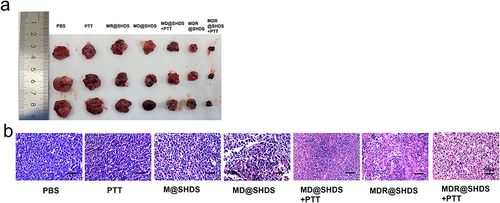
Figure 12 (a) Tumor growth curves. (b) Body weight changes of C57 mice bearing Lewis tumors were recorded every other day after different treatments.
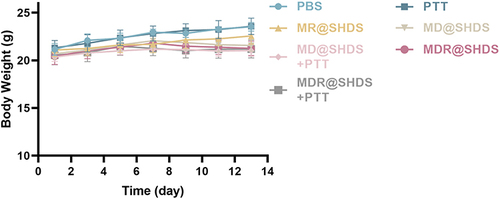
Data Sharing Statement
Any display item and related data are available upon request.

